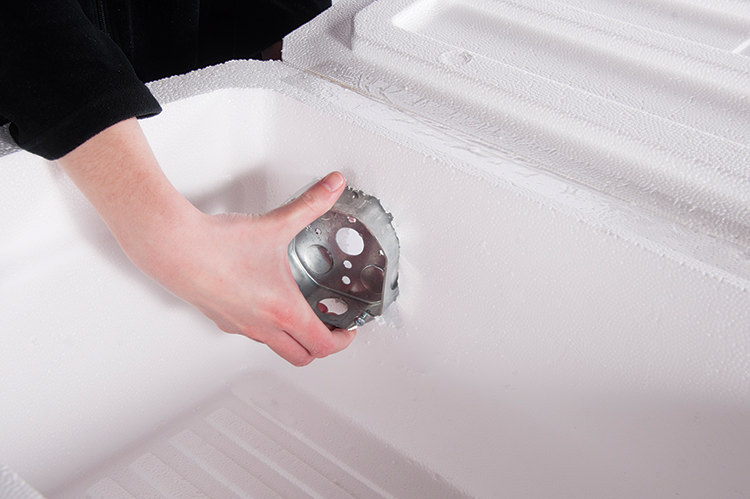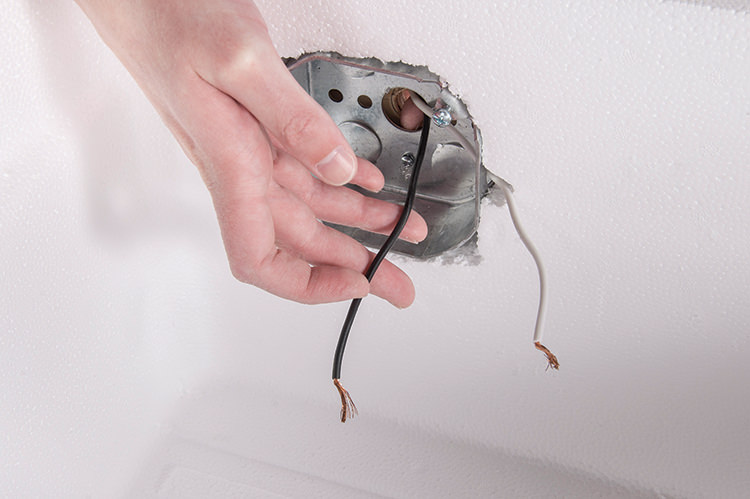
If you’ve been raising chickens for awhile, you might be considering hatching chicks in an incubator. It can be a fun project for yourself or to do with your kids. If you don’t already keep a flock, obtain some fertile eggs from a fellow chicken keeper or have fertile eggs shipped from a hatchery that offers a specific breed you’re interested in. While store-bought incubators are convenient and offer additional features, building your own homemade incubator can yield excellent results.
Our incubator design uses a plastic foam cooler to insulate the eggs and keep the heat from the light bulb from escaping, and we built an outer case from 1⁄2-inch plywood to protect the foam. However, there are many variations that can be just as successful. Feel free to modify these ideas to incorporate the parts you already have or can easily obtain.
How Incubators Work
The goal of an incubator is to maintain a temperature of 97 to 101 degrees F at all times. Here, we’re building a simple still-air incubator, meaning it has no fan to circulate the air. (An incubator with a fan is called a forced-air incubator.) Because of this, you should aim for a higher temperature of 101 degrees F. Your eggs need a humidity of 50 to 55 percent for first 18 days, and 65 percent or more for the last three.
If your incubator get too dry, your eggs may not hatch. To control the humidity, adjust the amount of water in the baking pan. If you’re not getting enough humidity, you can try adding a sponge to the pan; this should help bring more moisture into the environment.
For the first 18 days, your eggs must be turned over two or three times per day. To help keep track, use a pencil to mark an X on one side and an O on the other to help you remember which side is which. During the last three days, you should not disturb your eggs at all—no turning.
What You’ll Need

Cut List
- 2 11-by-16½-inch plywood pieces, 1⁄2-inch thick (outer case short sides)
- 2 11-by-27¼-inch plywood pieces, 1⁄2-inch thick (outer case long sides)
- 1 16½-by-26¼-inch plywood piece, 1⁄2-inch thick (outer case base)
Parts List
- 25½-by-13-by-16-inch plastic foam cooler
- plastic light fixture
- two 1⁄2-inch screws
- light fixture housing box
- two 5⁄8-inch screws
- grounded electric power cord
- 40-watt bulb
- electric water heater thermostat switch
- digital thermometer/hydrometer
- 5-by-7-inch piece of glass or plastic (from a picture frame)
- 12-by-8-inch disposable aluminum baking pan
- cooling rack
- small towel
- wood glue
- 1-inch nails
Tools List
- hammer
- tape measure
- pencil
- drill
- wood-boring drill bit
- wood bit
- screwdriver
- clear tape
- serrated knife
- razor knife
- wire cutters
Step 1

Using wood glue and 1-inch nails, create a five-sided cube, leaving the top open. Use the 16½-by-26¼-inch piece of plywood as a base. Add the two 11-by-16½-inch plywood pieces to create the short sides. Finally, use the two 11-by-27¼-inch pieces to add the long sides.
Step 2

Next, begin the slightly messy job of making some cuts to the cooler. On the back of the cooler, toward one side, use a pencil to score the rough shape of the light fixture housing box (as shown). Then carefully cut this shape out of the plastic foam. Keep a vacuum cleaner handy!
Insert the fixture box into its hole. You’ll also need to drill a 3⁄4-inch hole in the wooden case right behind the box to allow for the electrical cord. Once that is complete, you can screw the housing box to the plywood case with 5⁄8-inch screws.
Step 3

A glass window on the top of the incubator is very handy for allowing you to monitor the temperature, humidity and eggs without opening the lid. Again, score the outline of the 5-by-7-inch piece of glass. Then use a serrated knife to cut out the plastic foam slightly to the inside (1⁄4 inch), so that hole is a bit too small. Cut a small “shelf” for the glass to sit on, so that when you’re all finished, the glass sits flush with the cooler lid. Use some clear tape to smoothly attach the edges of the glass in place.
Step 4

The unhatched chicks need air to breathe—they actually breathe right through their eggshells—so it’s important to add ventilation to your incubator. Using a drill and a 1⁄2-inch wood bit, carefully drill a series of 1⁄2-inch holes into the plastic foam. There are no hard-and-fast rules, so this is another aspect you can experiment with. You might opt to add more holes, even adding holes through the wooden outer case. If you think your incubator is getting too much of a draft, you can re-cover some of the ventilation holes with tape.
Step 5

Now you’ll need to do some simple wiring for the light fixture and thermostat switch. Using a razor knife, strip away about 8 inches of the outer casing of the grounded electrical cord. Snip off the ground (green) wire and set it aside for later use. Feed the black and white wires through the hole in the fixture box. Leave black in the middle, but feed the white wire off through the side.
As with all things electrical, safety is a primary concern when building and using your incubator. Don’t plug the incubator in until you’re sure the wiring is correct. If you’re new to wiring or electrical procedures, seek help from someone knowledgeable.
Step 6

Attach the thermostat switch to the cooler wall, somewhere near the light bulb. (We screwed right into the plastic foam, but you could also use tape or glue.) Attach the white wire to one of the thermostat screws, and then use that leftover piece of ground wire to connect the other screw back to the fixture box.
Step 7

Attach the black wire to the brass screw on the light fixture and the other wire to the silver. Screw the light fixture into the housing box, and insert a 40-watt light bulb, which will serve as your heat source.
Step 8

You’ll need a simple water source to add humidity to the incubator. A disposable aluminum baking pan works great, though you can use just about any container. You’ll also need somewhere to place the eggs: an elevated cooling rack worked great for us. (To keep the eggs from rolling around, place them on a small towel.) Don’t forget to add in your thermometer/hydrometer.
Step 9

Turn on your incubator, and monitor your setup for a day or two prior to adding eggs to make sure that you have the temperature and humidity correct and to give you time to make any necessary adjustments. When you’re satisfied things are good to go, put in your eggs.
Modifications To Your Incubator
These directions are for a still-air incubator—aka, one without a fan—but you can modify the plan to add a fan for air circulation. Many people have success recycling a simple used 12-volt cooling fan from an old computer. If you decide to go this route, you’ll need a 12-volt DC converter.
The water heater thermostat is great because it constantly measures the ambient air temperature and automatically turns on or shuts off the light bulb as needed to maintain the target temperature, which is adjustable with the switch. Some people building homemade incubators swap the thermostat for a dimmer switch and control the temperature by brightening or dimming the light, but this requires more attention and fine-tuning to maintain ideal warmth while the water heater thermostat does this for you. If you find your thermostat is allowing too much of a temperature swing, you can experiment with increasing or decreasing its distance from the light bulb.
Understand that incubating eggs properly is challenging, and 100-percent success rates aren’t always possible. Even slight shifts in temperature or humidity can be enough to cause some eggs to fail, so be prepared for that ahead of time.
This article was the written with the help of Samantha Johnson. Daniel and Samantha are a brother-and-sister writing team from Wisconsin who have collaborated on several books, including How to Build Chicken Coops (2015).
This article originally appeared in the March/April issue of Chickens magazine.




